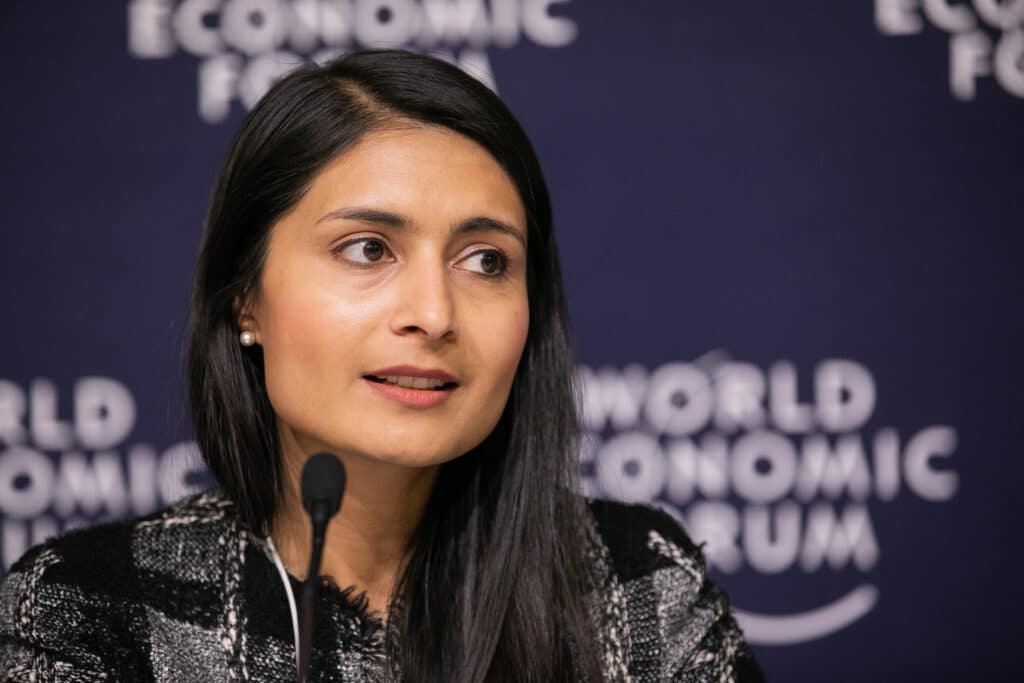We will need to wait another 131 years for the world to reach gender parity, according to the World Economic Forum’s latest Gender Gap Index.
And that’s only if we can maintain the current level of already very, very slow progress. As we’ve seen from the pandemic, and as the new 2023 figures reveal, a regression can set in during volatile times. What’s now 131 years away, could easily become 140 years next year, and 200 the following.
Once again, this WEF research offers a global overview of how gender equality is progressing, as well as the countries leading and falling behind. This year, unsurprisingly, Iceland topped the list and became the only country to close more than 90 per cent of its gender gap.
Australia comes in 26th overall, an impressive 17 places higher than in 2022. But Australia falls behind on economic participation and opportunity, ranking 38th . Australia ranks 29th for political empowerment, but only 89th for health and survival.
As for the improvements that have occurred globally, much of it has been as a result of closing the educational attainment gap, which is positive to see. 117 out of the 146 indexed countries have now closed at least 95 per cent of this gap.
With women now outnumbering men in terms of university enrollments in the majority of countries, it’s gaps elsewhere — like in leadership and political representation — that are starting to look even more problematic, meaning women may be struggling to fully use their qualifications.
Meanwhile, the progress that has been occurring on closing gender gaps internationally has been very, very slow, despite the heightened focus on supporting more women in leadership and other areas. We have seen just a tiny 4.1 percentage points in progress towards parity since the WEF’s first edition in 2006. While we will be waiting another 131 years to close the overall gender gap, it is 169 years for economic parity and 162 years for political parity.
As Saadia Zahidi, Managing Director of World Economic Forum, said on the release, part of the problem is in the current cost of living crisis that is impacting most countries, as well as labour market disruptions. But she shares some positive news: there are signs of recovery to pre-pandemic levels.
“An economic rebound requires the full power of creativity and diverse ideas and skills. We cannot afford to lose momentum on women’s economic participation and opportunity,” she said.
Across our region in the Pacific, New Zealand is the only country to make the top ten on gender parity. Unfortunately, progress has been stagnating for over a decade in the region — and overall it’s seen a 1.6 percentage point decline since the last edition.
Women’s leadership appointments stall
One particularly concerning finding in the report is that women’s leadership appointments appear to be on the slowdown, in line with the global economic slowdown, and demonstrating again that progress towards gender equality is rarely assured.
While the rate of women being hired into senior leadership roles had been improving – at a rate of a just ONE per cent annually for the past eight years, the figure dropped to just 32 per cent in the first quarter of 2023, which takes us back to levels that were seen in the height of the pandemic, when women took on much of the brunt of the work at home.
This regression perpetuates the “Drop To the Top” phenomenon – where women’s leadership rates decline steadily the further up the chain you go. It’s occurring and continuing, despite the fact women now make up the majority of university enrollments in most countries worldwide.
Overall, women represent 46 per cent of entry-level roles, but then only 25 per cent of C-Suite roles.
Meanwhile, the WEF researchers have shared concerns about gender gaps in big data skills and artificial intelligence.
So what can help? According to the WEF, more investment in the care system is vital, along with STEM education investments to support the upskilling and careers of girls and women across these areas. They have also called for a greater focus on mechanisms for gender-equal hiring, retention, and promotion across the workforce.
The slowdown data should also serve as a wakeup call to organisations to address their hiring processes, including to ensure gender bias or assumptive language is removed from job advertisements, that recruiters are providing a diverse range of shortlisted candidates, and that women are included in interviewing panels and across the hiring process. This latest data should also highlight the importance of visibility in leadership positions, something that if this trend continues will only get harder for employers to try and achieve.
The top ten countries on gender parity:
- Iceland
- Norway
- Finland
- New Zealand
- Sweden
- Germany
- Nicaragua
- Namibia
- Lithuania
- Belgium


